Migrant workers: hidden rural mobilities

UK farming relies on seasonal migrant workers to plant, harvest and pack fruit and vegetables. Over 90% of seasonal workers in the UK are migrants. Yet, they tend to be a hidden community across rural spaces.
In previous exhibitions—on raspberries and strawberries—illustrations by Sarah Hannis showed the work of migrants and their role in food production from farm to fork. This final instalment shows the physical mobility experienced by seasonal migrant workers, during farm labour as well as in the transitions as they arrive, depart, and move between crops and farms. These stories are based on interviews with workers and on photos they shared during the Feeding the Nation research project.
This exhibition is a collaboration between artist Sarah Hannis, the Feeding the Nation research team, and The MERL.
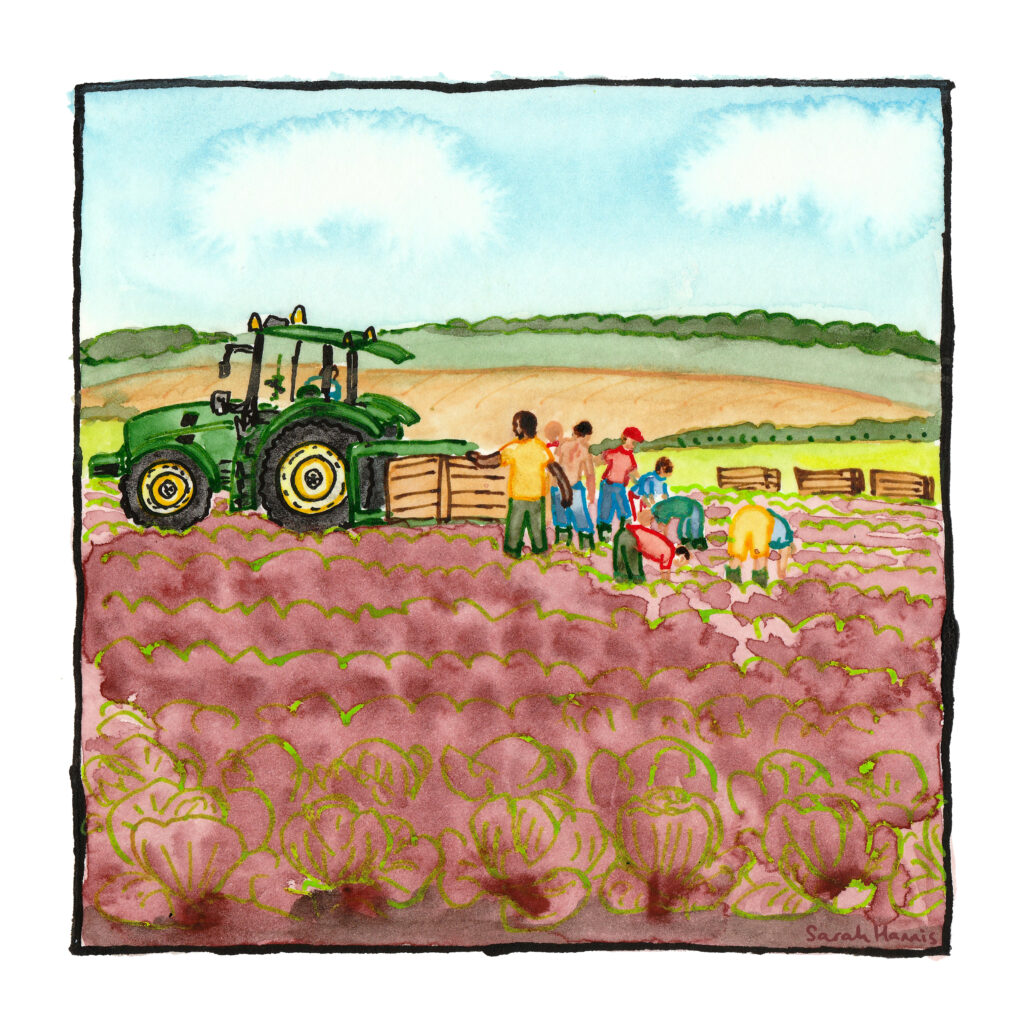
Labour: Learning
Against the pleasant backdrop of the British countryside, teams of workers graft to meet their targets. The job requires workers to be in sync with the rhythms of the machines and nature they work alongside. The weather, seasons, and daylight dictate routines.
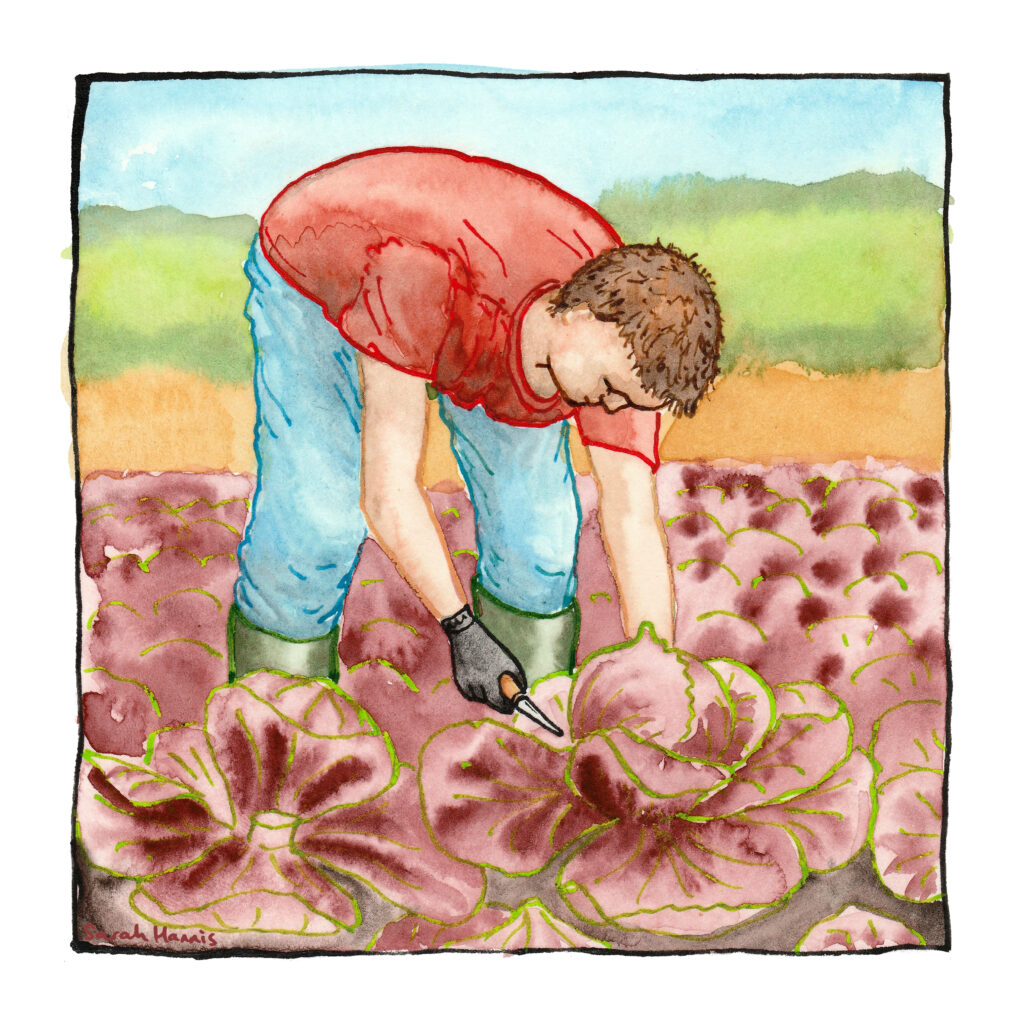
Labour: Bending
Modern machines such as tractors can play a supporting role to manual tools. Knives used to cut the stalk off the cabbages require great dexterity. This is back-bending work which can result in health issues for returning workers.

Labour: Throwing
Time is of the essence to meet the deadlines that retailers set. Team work and cooperation is required to ensure the produce is harvested in time. This work is marked by dirt on protective gloves and by blisters on hardworking hands.
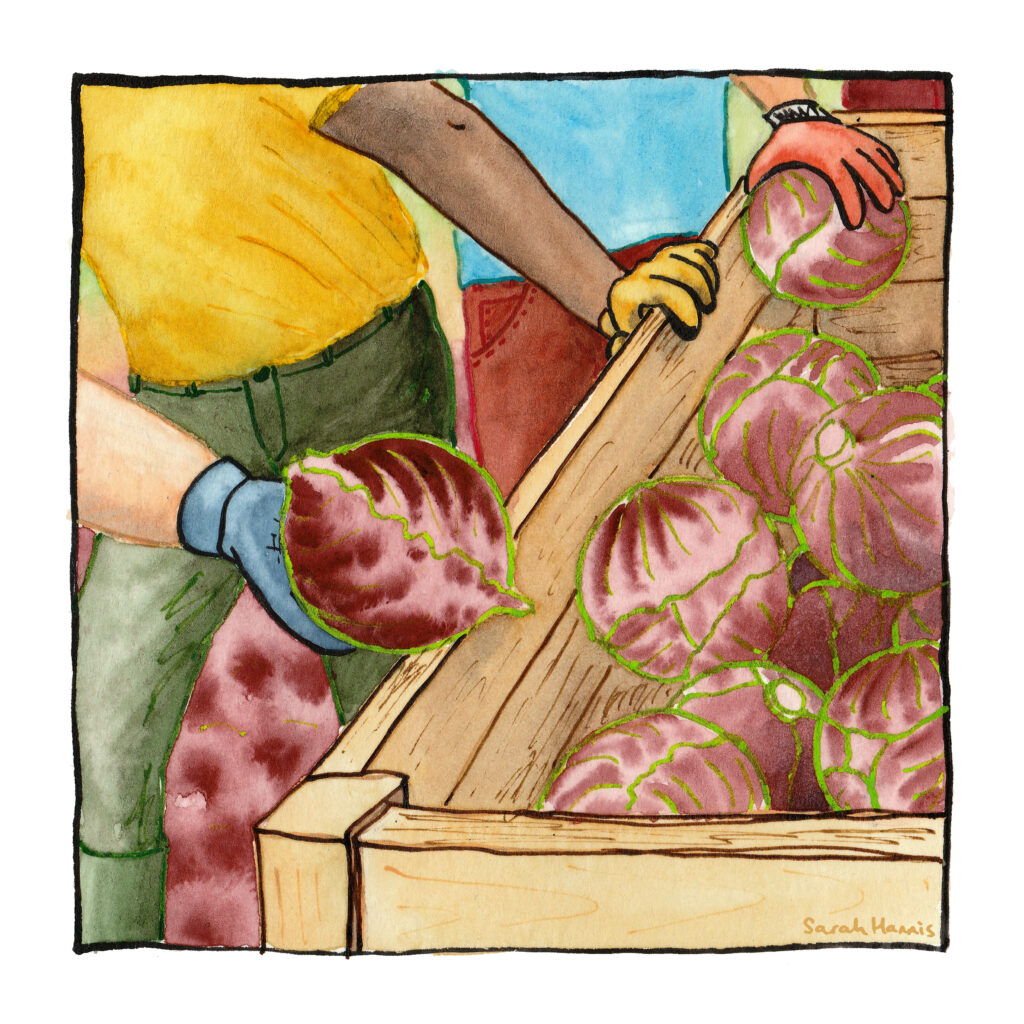
Labour: Examining
Feeling and examining the vegetables allows workers to judge the quality of the produce. This knowledge comes from years of practice with vegetables and from learning the standards of farmers, retailers and consumers.
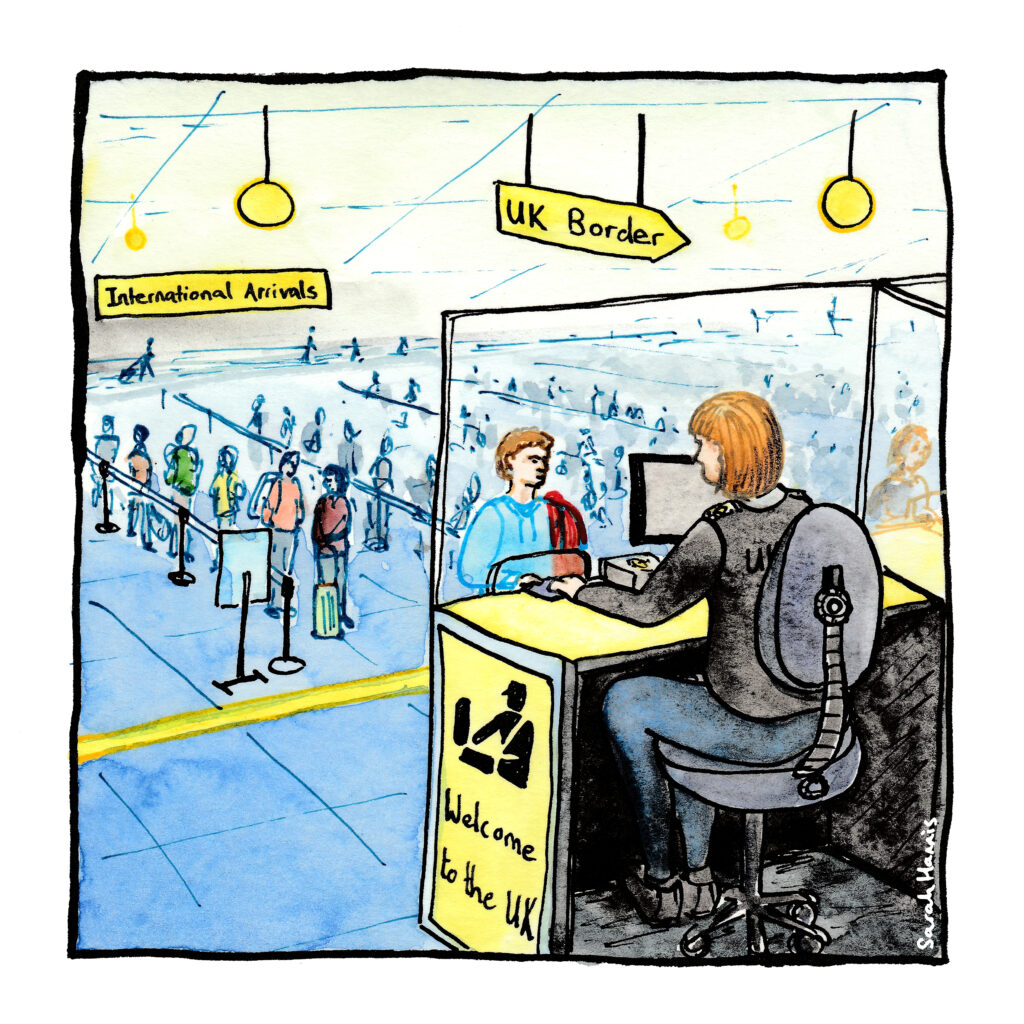
Getting around: Leaving home
Seasonal workers arrive in the UK from countries such as Romania, Bulgaria, Ukraine, Moldova, and Indonesia to work on farms. Many choose this work for the cultural experience and to improve the financial situation of their own enterprises, homes, and families.
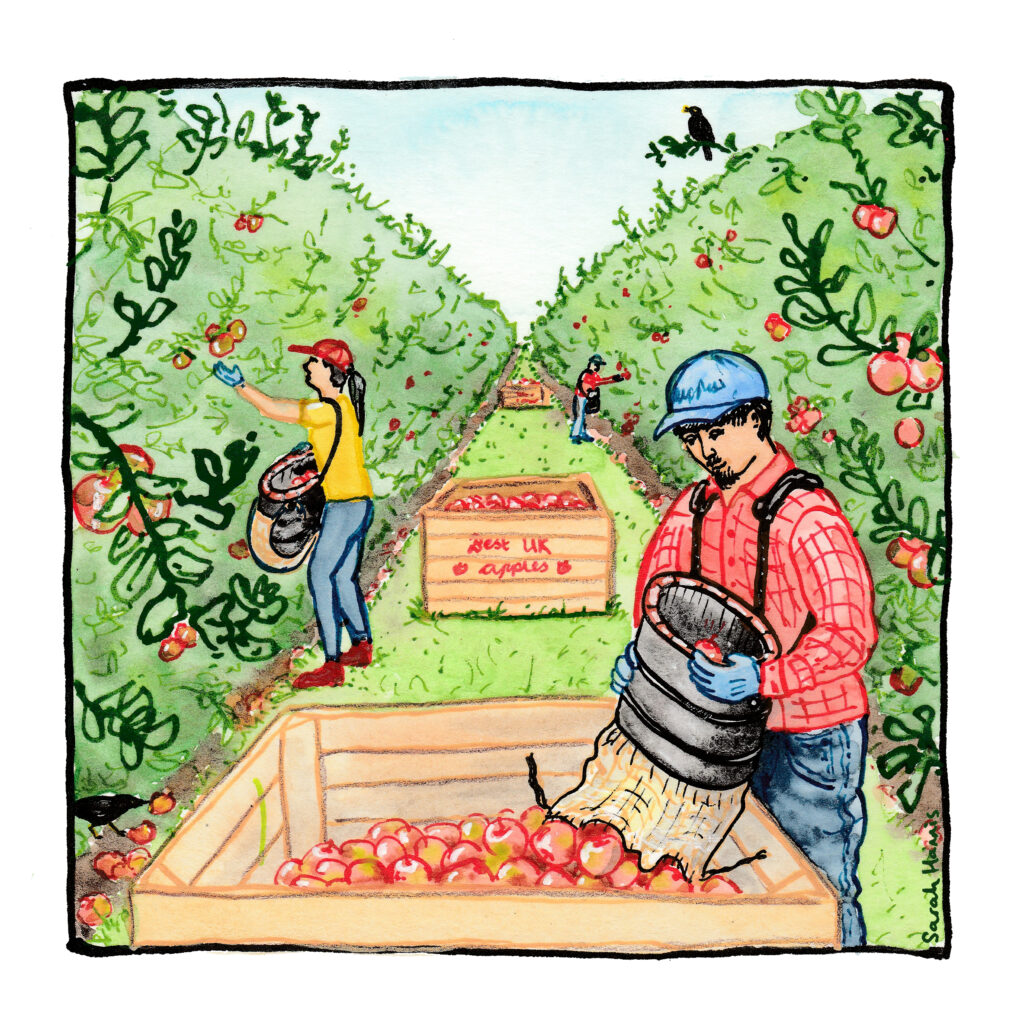
Getting around: Picking Apples
Often farms have a variety of produce, some of which may require attention at different times of the year. Seasonal workers must adapt quickly to a range of growing systems and harvesting techniques if they move farm or crop.
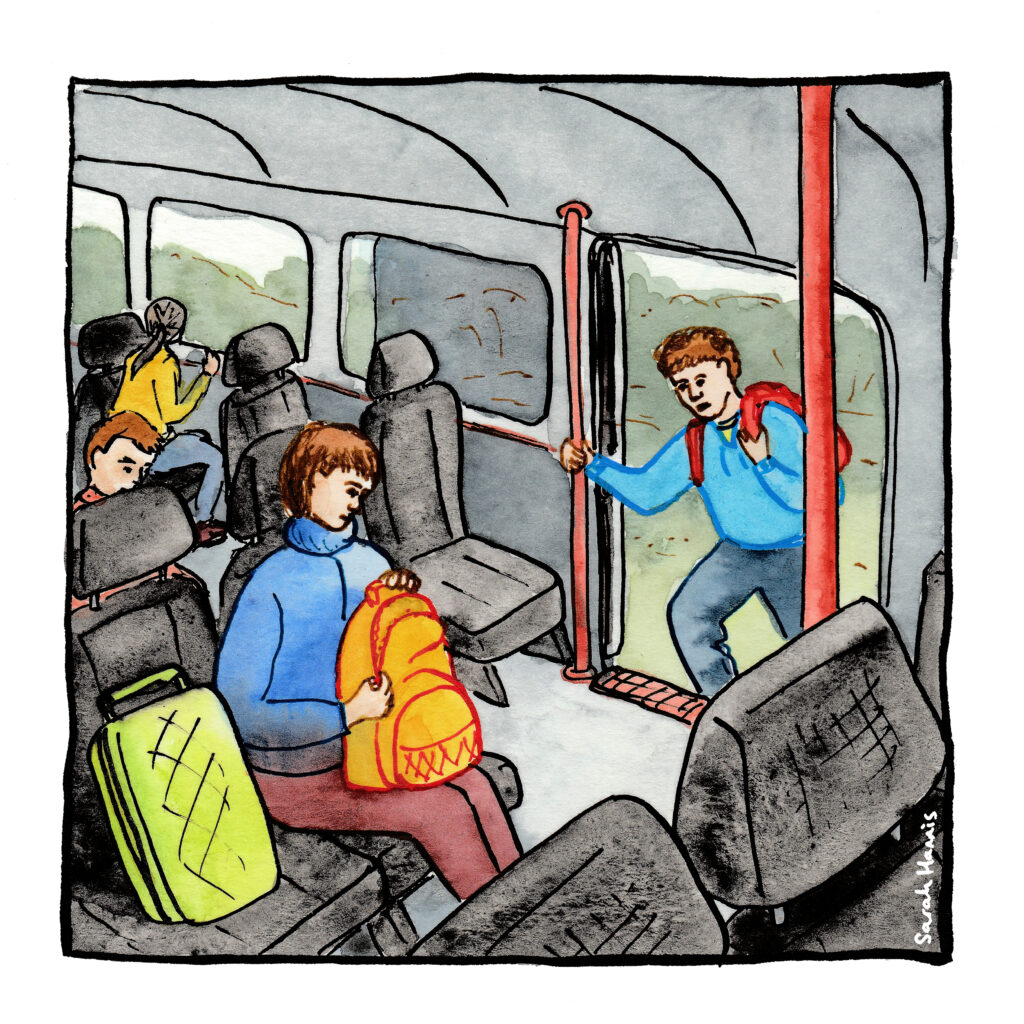
Getting around: Moving Farm
As well as moving fields, workers may also move farms. As they get used to the new terrain of the working environment, they must also adapt to a new living environment.
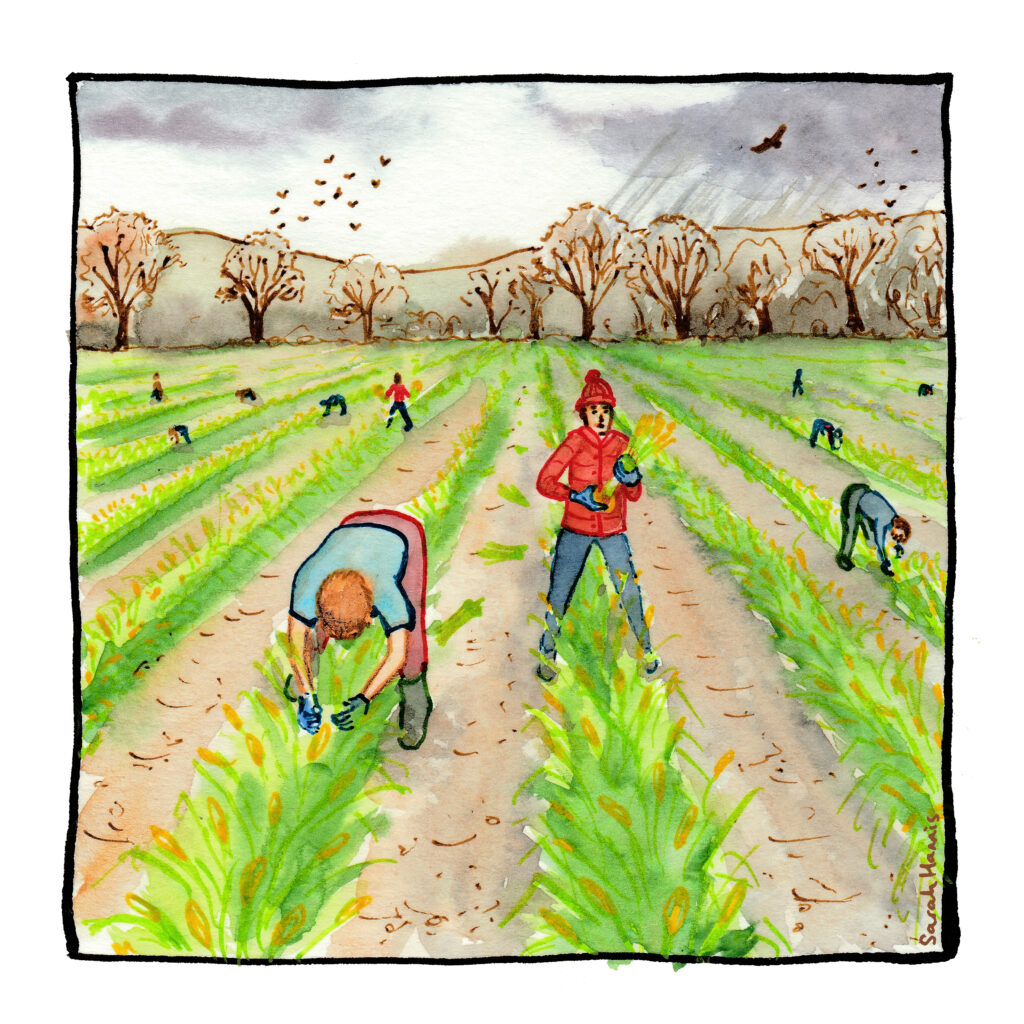
Getting around: Picking Daffodils
Seasonal farm work includes ornamental flower production. Daffodils are ready in Spring and demand is high for Mothering Sunday. These play an important role in consumer wellbeing and the local economy, especially on the South West Coast.
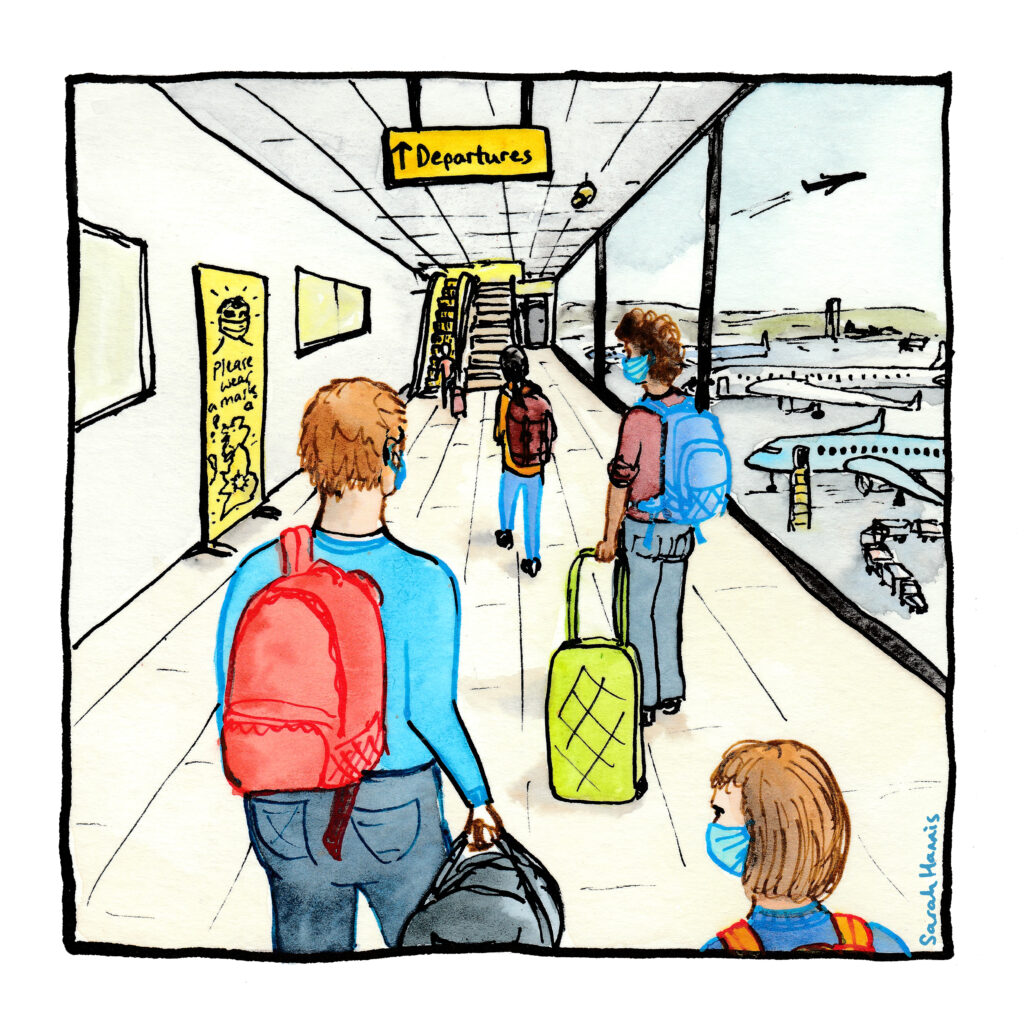
Getting around: Returning home
Horticultural work is seasonal, but it is not temporary. Many migrant workers will return home for 6 months and then return to the UK annually. They do not know if they will be placed on the same farm, but what is clear is that the UK food system is reliant on them to pick, pack, and process food.
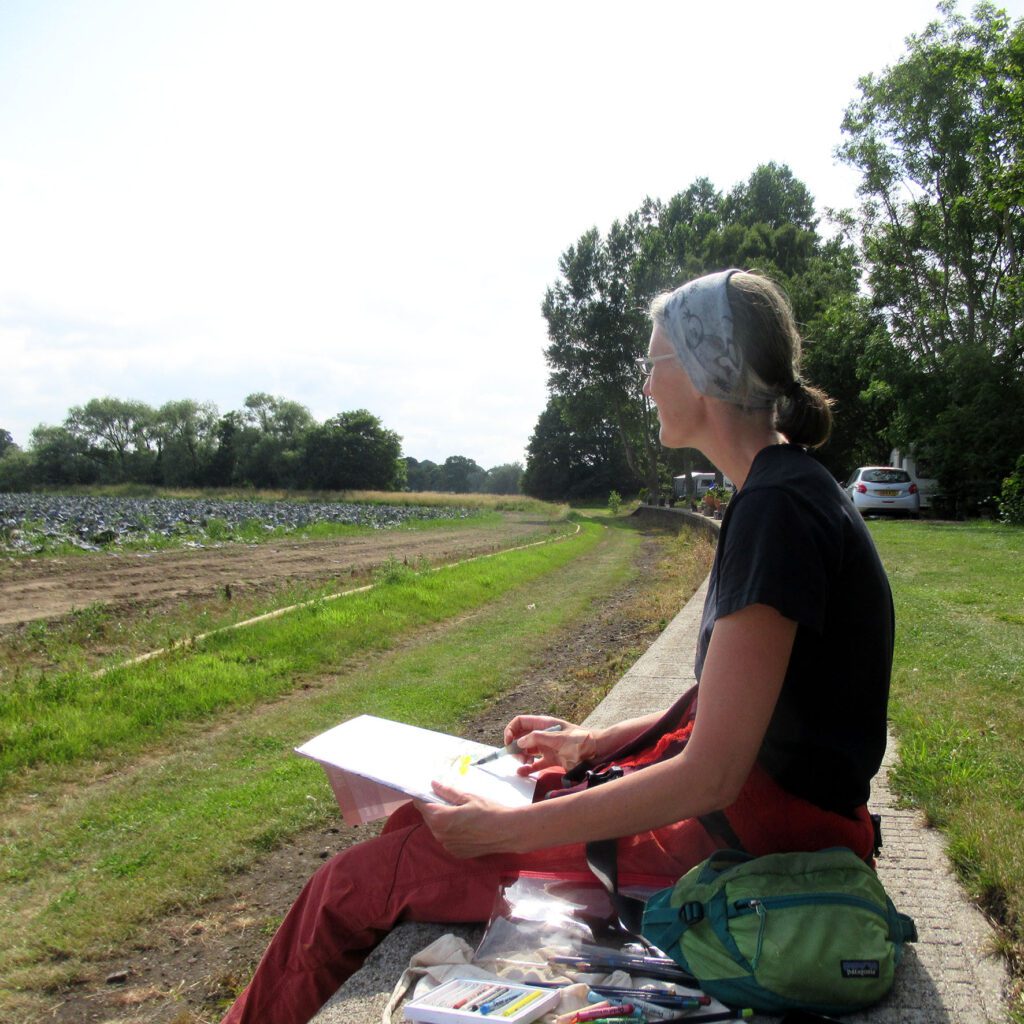
Meet the artist
Sarah Hannis is an illustrator who sketches what she sees around her almost everyday. Her sketchbooks are filled with ink and watercolour drawings of scenery, birds, plants, insects, and people. Together they evoke a sense of time and place.
In this collection, Sarah hopes the feeling of being in someone else’s shoes comes across to provide a small window into the lives of migrants working in the UK.
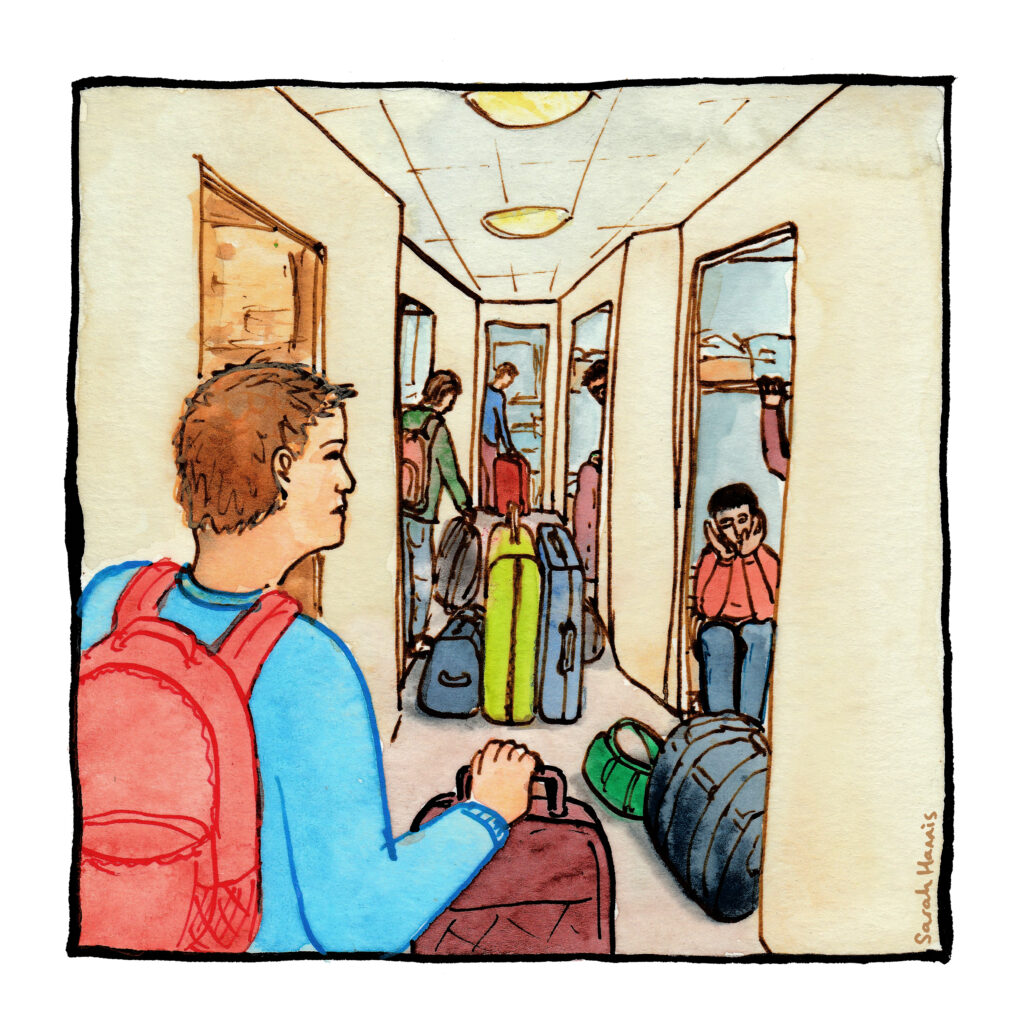
Where to from here?
The project collaborated with the Department for Environment Food & Rural Affairs (DEFRA), as well as New Europeans UK to co-produce support guides for migrant farm workers.
Since research began in 2020, labour shortages in seasonal farm work continue to resurface in the news as farmers reassess businesses and consumers face food shortages. Over this same period, the Seasonal Worker Visa pilot was reviewed and a policy extension for 3 years was announced but with an agenda to pursue alternatives to migrant workers.
Listen here to a song created by folk duo Pedler//Russell to continue to raise awareness of the lived experiences of seasonal workers in the UK.

Acknowledgements
Feeding the Nation is an Economic and Social Research Council / UK Research and Innovation funded project (ES/V015257/1). It is a collaboration between the School of Sociology and Social Policy at the University of Leeds (Dr Roxana Barbulescu / Dr Bethany Robertson), and the Centre on Migration, Policy, and Society at the University of Oxford (Professor Carlos Vargas Silva / Rosaleen Cunningham). Dr Ollie Douglas and Isabel Hughes are pleased to share this project at The MERL.
With special thanks to all who participated in the research.
To follow a raspberry planter’s winter journey click here. To follow a strawberry picker’s summer journey click here.